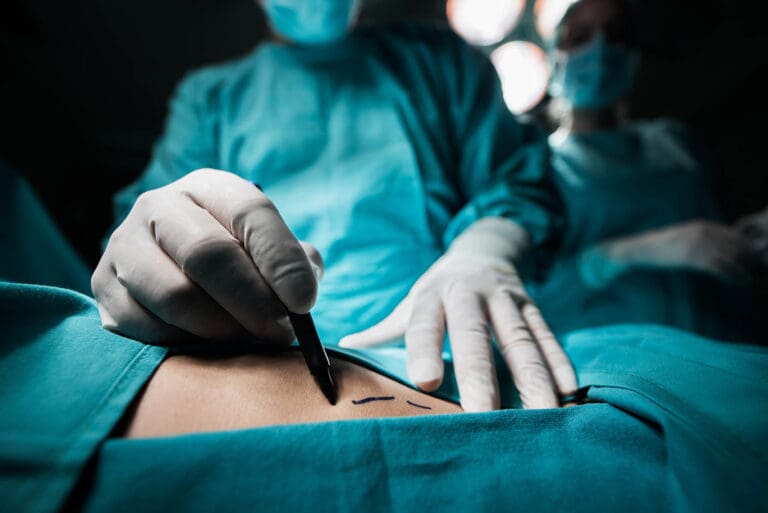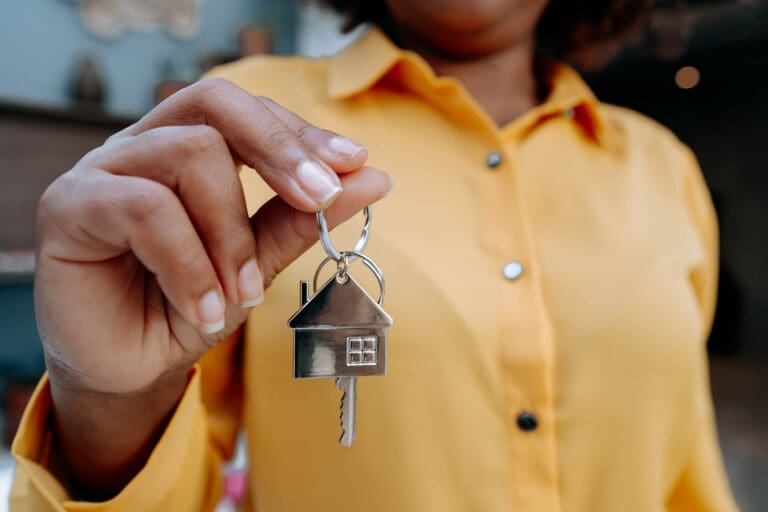At 29, my body began to signal something was terribly wrong. It took years of second opinions, self-advocacy and plenty of family support to find the hope and healing I needed.
I’ll be honest. I didn’t spend years preparing for a liver transplant. I didn’t grow up with a chronic condition, and I never imagined needing a new organ to survive.
On the outside, I was a “normal” 27-year-old: working in communications for the Government of Bermuda, newly engaged to my now husband Trey, and armed with a clean bill of health from my most recent doctor’s check-up. I traveled, spent days on the beach, walked my dog, walked to work. By all appearances, I was thriving.
But at 29, something shifted. My body began to signal that something was terribly wrong. I’d moved back to the U.S., and between planning a wedding, work and my social life, I was busy. Too busy to notice myself hitting snooze every morning; to notice my clothes didn’t quite fit; to notice I was forgetting to close cabinet doors and check the mail.
Finally, my best friend came out and said it: “Your eyes are yellow.”
She wasn’t the first to notice, I had too. But after 30 minutes of inconsistent Google searches, and 30 more of rationalizing this was all just a coincidence, I dismissed it. Then one day I reached for my sandals, and they could barely slide past my toes. That’s when I knew, it was time to call a doctor.

The first said I was gaining weight and swiftly sent me home without even a Tylenol. Unconvinced, I saw another doctor, who grabbed my hands and sadly said: “Your liver is failing.”
The yellow eyes: jaundice. The forgetfulness: ammonia buildup around my brain. The snooze button: fatigue. Shrinking clothes and sandals: water retention.
For the first time, my name was linked to a Model for End-Stage Liver Disease (MELD) score, a scale of 6-40 that assesses the severity of chronic liver diseases and is used to prioritize the national transplant list. Mine was 26. I didn’t need a doctor; I needed a specialist.
He walked in looking like he’d just hopped off a surfboard and into his white coat. Cool, chatty…expensive. He mapped out a plan: weekly labs, MRIs, ultrasounds, a strict medication regimen and a biopsy. He suspected autoimmune hepatitis, a chronic condition where the immune system attacks and scars the liver. There’s no cure, but it can be managed with proper treatment.
My mom, the only guest allowed, spoke up. “Do you think her condition has anything to do with her bile ducts? We’ve been doing our own research.”
After the near-fatal miss from the first doctor, we shifted into full advocacy mode — researching, asking questions, challenging assumptions. But my bile ducts “weren’t a concern,” so I showed up for the biopsy, ultrasounds and MRIs; all of which showed my liver was cirrhotic, scarred and beyond repair.
For a while, I took my medications and everything was “fine.” My labs were high but stable, and I didn’t “feel sick.” I could live with that.
I married Trey. We honeymooned in the Dominican Republic, decided on an oriental theme for the living room and fell into our routines. There were moments when my illness loudly interrupted, like the Thanksgiving we spent in the hospital or weekends when I just wasn’t up to going out.
One evening, Trey quietly asked, “Why don’t we get a second opinion?” He was right. I was surviving, but thriving? Not even close. And the cabinets were open again. The mail wasn’t checked.
Thank God for Dr. Julius Wilder, a gastroenterologist and hepatologist at Duke Health in North Carolina.

Dr. Wilder suspected primary sclerosing cholangitis (PSC), a rare, progressive liver disease that causes inflammation and scarring of the bile ducts inside and outside the liver. It affects about one in 10,000 people worldwide, with only one in 100,000 diagnosed each year.
The news crushed me. Not only had my mom asked about my bile ducts early on, I’d wasted two to three years on the wrong treatments. I’ve since learned that misdiagnosis in liver disease isn’t rare and that’s why it’s so important to advocate for yourself, even when it’s uncomfortable. Your life might depend on it.
Just when we were beginning to process it all, Trey and I got jobs in Virginia. Before the move, while visiting New York, I had a seizure in my hotel room. That crisis was a turning point. A reminder that liver disease can be unpredictable, even when you’re doing everything right.
My last memory was getting stitches in a Manhattan ER because I’d hit my head and broken my nose on the way down. Five days later, I woke up at New York Presbyterian Weill Cornell Medical Center. It was March 9, my mom’s birthday.
Trey and my parents had sat vigil waiting for me to wake from an induced coma. I’d suffered internal bleeding that triggered the seizure. While they waited, Dr. Wilder and the New York doctors pieced together my diagnosis from states apart and contacted Virginia Commonwealth University to ensure I’d land in the right medical hands after my move.
That’s how I met transplant hepatologist Dr. Hannah Lee with VCU Health.
Instantly, Dr. Lee knew it was PSC, and right away she said I’d eventually need a transplant. It was hard to put our trust in yet another doctor, but something about her honesty — the way she took time to educate us — felt different. So, we did the only thing we could: we trusted our instincts. We chose to believe her.
She began treatments to stabilize my levels and referred me to VCU Health’s Hume-Lee Transplant Center in Richmond for an evaluation. It was exhaustive, a rigorous process that ensures only those who are truly ready and able are placed on the national transplant list. The team unanimously decided I was.
Then it happened. I had stayed home from work, convinced I was fighting a terrible cold. When Trey came home and I could barely keep my eyes open, he made a move.
Our ER visit quickly became an ambulance ride to the Hume-Lee Center. For days, they struggled to stabilize my liver labs, which were in the hundreds. My MELD score had rapidly climbed to 39 out of 40: end stage liver disease.
My family rallied around me as the doctors worked overtime to find a viable liver. And on Dec. 11, 2023, they found her—a deceased donor whose sacrifice I carry with me every day. Twenty-four hours later, an upside-down Y-shaped incision was made across my abdomen, and I was on the road to recovery.
Healing is long. Six months minimum. It’s not just about making sure your body doesn’t reject the organ; it’s a daily balancing act. Managing pain, medications, weekly doctor visits, fatigue and fear.
On one of my most painful days, I told Trey I wanted to give up. He gently reminded me: your body isn’t your opponent, it’s your partner. And that’s just it. It may have failed you, but it can save you too.
Now, nearly two years later, my life has found its fullness again. There’s a gap in the clouds.
That’s why I’m sharing this. Because there’s hope. And the more we talk about it, the more we know — to trust our gut, to get that second opinion, to understand that organ donation isn’t some mystery. It’s real. It saves lives.
It saved mine.

























